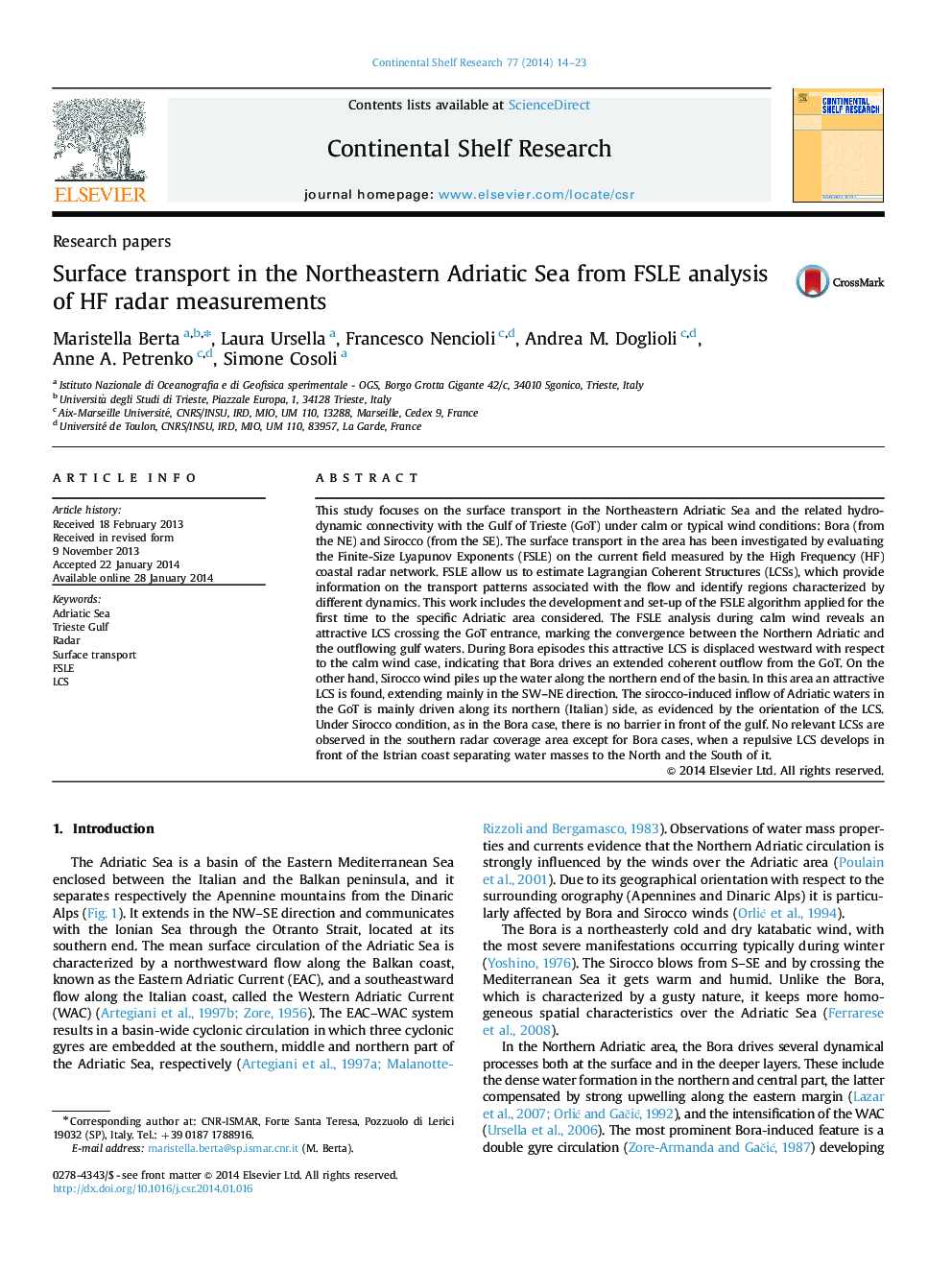| Article ID | Journal | Published Year | Pages | File Type |
|---|---|---|---|---|
| 4531960 | Continental Shelf Research | 2014 | 10 Pages |
•We study surface transport in the NE Adriatic Sea associated with Bora and Sirocco wind.•Application of the FSLE technique on the current fields detected by HF coastal radars.•Under calm wind conditions an attractive LCS crosses the GoT entrance (SE–NW direction).•In Bora episodes the attractive LCS is displaced westward, no barrier in front of GoT.•In Sirocco cases the attractive LCS extends in the SW–NE direction, for inflow in the GoT.
This study focuses on the surface transport in the Northeastern Adriatic Sea and the related hydrodynamic connectivity with the Gulf of Trieste (GoT) under calm or typical wind conditions: Bora (from the NE) and Sirocco (from the SE). The surface transport in the area has been investigated by evaluating the Finite-Size Lyapunov Exponents (FSLE) on the current field measured by the High Frequency (HF) coastal radar network. FSLE allow us to estimate Lagrangian Coherent Structures (LCSs), which provide information on the transport patterns associated with the flow and identify regions characterized by different dynamics. This work includes the development and set-up of the FSLE algorithm applied for the first time to the specific Adriatic area considered. The FSLE analysis during calm wind reveals an attractive LCS crossing the GoT entrance, marking the convergence between the Northern Adriatic and the outflowing gulf waters. During Bora episodes this attractive LCS is displaced westward with respect to the calm wind case, indicating that Bora drives an extended coherent outflow from the GoT. On the other hand, Sirocco wind piles up the water along the northern end of the basin. In this area an attractive LCS is found, extending mainly in the SW–NE direction. The sirocco-induced inflow of Adriatic waters in the GoT is mainly driven along its northern (Italian) side, as evidenced by the orientation of the LCS. Under Sirocco condition, as in the Bora case, there is no barrier in front of the gulf. No relevant LCSs are observed in the southern radar coverage area except for Bora cases, when a repulsive LCS develops in front of the Istrian coast separating water masses to the North and the South of it.
